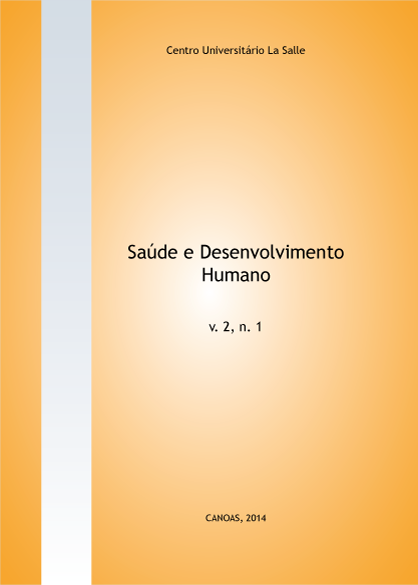Regional standardization of estimate tables of percentilic categorization of neuromotor tests
DOI:
https://doi.org/10.18316/1168Keywords:
Physical activity, physical assessment, neuromotor testAbstract
Introduction: The number of practitioners of physical activity currently suffered a considerable increase on the part of the Brazilian population. With the increase of this practice, it is necessary to classify the individual according to his physical fitness through normative tables.
Goal: Standardization of estimate tables of percentílic categorization of neuromotor tests.
Materials and methods: This work was characterized by a retrospective study, transversal and descriptive with samples for convenience. The protocols of evaluation of 300 regulars of 18 to 45 years of age of both sexes of the Assessment of Human Performance of ASCES College have been analyzed.
Results: The tables used are part of an attempt to regionalize the indexes of tests to analyze some motor skills that were evaluated. It was observed that the percentile obtained in the proposed tables obtained a well satisfactory result with respect to the classification of the individuals. In the already existing tables there was a difference in the percentile, not having a normalcy of results among these tables.
Discussion: The proposal for Standardization of test table neuromotors of each population is of paramount importance in the context of the physical education. Since the existing tables were produced with populations of other countries, even so they are used as standard reference in our country. The regionalization of the percentílic tables could solve this problem by setting specific standards for each population.
Conclusion: The estimate tables of percentílic characterization of neuromotor tests obtained satisfactory results of evaluation for the population evaluated in relation to the flexibility, muscular endurance localized tests and manual dynamometry.
References
ALBINO, et.al. Tabelas de classificação da aptidão física para freqüentadores de parques públicos.
ed. são Paulo: Rev Bras Med Esporte – Vol. 16, No 5 – Set/Out, 2010.
NIEMAN DC. Exercício e Saúde. São Paulo: Manole, 1999.
ZAGO, A.S. GOBBI,S. Valores normativos da aptidão funcional de mulheres de 60 a 70 anos. R. Bras.
Ci. e Mov. Brasília v. 11 n. 2 p. 77-86 junho 2003.
PEREIRA, E. F.; TEIXEIRA C. S. Proposta de valores normativos para avaliação da aptidão física em
militares da Aeronáutica. Revista Brasileira de Educação Física e Esporte, São Paulo, v.20, n.4, p.249-56,
out./dez. 2006.
CORSEUIL, M,W & PETROSKI, E,L. Baixos níveis de aptidão física relacionada à saúde em universitários.
Rev. bras. Educ. Fís. Esporte, São Paulo, v.24, n.1, p.49-54, jan./mar. 2010.
GLANER, M.F. Importância da aptidão física relacionada à saúde. Revista Brasileira de Cineantropometria
& Desempenho Humano, Florianópolis, v.5, n.2, p.75-85, 2003.
COSTA EQ, RIBEIRO VMB, RIBEIRO ECO. Programa de alimentação escolar: espaço de aprendizagem
e produção de conhecimento. Revista Nutrição. São Paulo, v.14, n.3, p. 225 – 229, set./dez. 2001.
COSTA, K.P.NETOS,C.S. Aptidão física relacionada à saúde entre grupos etários masculinos. Motriz,
Rio Claro, v.15 n.2 p.199-208, abr./jun. 2009.
MONTEIRO. Apud RAPHAEL, VIANA. Proposta de Categorização Percentílica de Testes Neuromotores
de Individuos do Município de Caruaru – PE. 1. Ed. Caruaru: ASCES, 2010.
MANIOS Y, KAFATOS A, MARKAKIS G. Physical activity of 6-year-old children: validation o two
proxy reports. Pediatric Exercise Science, Champaign, v.10, p.176-88, 1998.
RINER W, TROST SG, PATE RR, WARD DS, SAUDERS R. Correlates of objectively measured
physical activity in preadolescent youth. American Journal of. Preventive Medicine, New York, v.17, n.2,
p.120-26, 1999.
MAIA JAR, LOPES VP, MORAIS AFP. Actividade física e aptidão física associada à saúde: um estudo
de epidemiologia genética em gémeos e suas famílias do arquipélago dos Açores. Porto: FCDEFUP/
DREFD-Açores, 2001.
SANTOS JS, COSTA COM, SOBRINHO CLN et al. Perfil antropométrico e consumo alimentar de
adolescentes de Teixeira de Freitas – Bahia. Rev. Nutr., Campinas, 18(5):623-632, set./out., 2005.
CELESTRINO JO, COSTA AS. A prática de atividade física entre escolares com sobrepeso e obesidade.
Revista Mackenzie de Educação Física e Esporte – 2006, 5(especial):47-54.
LOPES VP, MAIA JAR, OLIVEIRA MMC et al. Caracterização da atividade física habitual em adolescentes
de ambos os sexos através de acelerometria e pedometria. Rev. paul. Educ. Fís., São Paulo,
(1): 51-63, jan./jun. 2003.
COSTA EQ, RIBEIRO VMB, RIBEIRO ECO. Programa de alimentação escolar: espaço de aprendizagem
e produção de conhecimento. Revista Nutrição. São Paulo, v.14, n.3, p. 225 – 229, set./dez. 2001.
Downloads
Published
Issue
Section
License
Authors who submit their manuscripts to be published in this journal agree to the following terms:
- Authors retain copyright and grant the journal right of first publication with the work simultaneously licensed under the Creative Commons Attribution License that allows the sharing of work and recognition of its initial publication in this journal.
- By virtue of the articles appearing in this open access journal, articles are free to use, with proper attribution, in educational and non-commercia.


